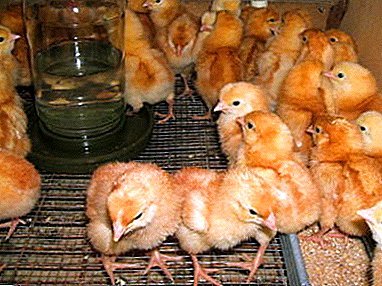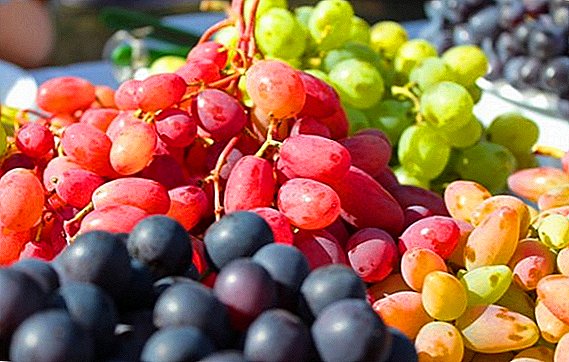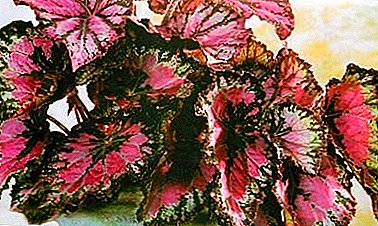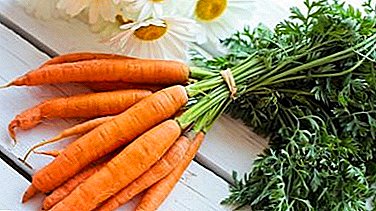
If you decide to grow laying hens, special attention should be paid to the quality of the feed. Why is this so important? Because low-quality food can not only significantly affect the performance of chickens, but even lead to the death of birds.
It is for this reason that everyone. and especially for beginners in the agricultural sphere, there are many questions about how to properly feed laying hens, and from a very young age. That is, when they are still chickens.
Features of the diet at home
Immediately after hatching, there are enough nutrients in the chicks. Therefore, the first few hours they will do well without feeding. But then you need to equip them with feeders with food and fresh, clean water. Speaking more precisely, the earlier the chicks start to eat, the better.
 It would be ideal if the first meal of chickens came no later than 2 hours after they were born. Why is the time of their first meal so important? Because it is inextricably linked with their reproductive characteristics.
It would be ideal if the first meal of chickens came no later than 2 hours after they were born. Why is the time of their first meal so important? Because it is inextricably linked with their reproductive characteristics.
When feeding such chickens it is important to take care of many factors.:
- that the feed contains the right ingredients;
- that the amount was sufficient;
- so that the periodicity is correct;
- that the diet was nutritious, and must always be present fresh clean water.
It should be particularly noted that the feed for chickens should be located in feeders that are accessible to chickens.
At the beginning of life you need to do this every 2 hours. How often to feed the chickens in the future? Depends on their age. The feed rates for chicks as they grow up are as follows:
- from the first to the tenth day - 8 times a day;
- on day 11 - the number of feedings is reduced to 6 times;
- in a month you can feed 4 times a day;
- once a day;
- when the chicks are 6 weeks old, you need to enter food three times a day.
It is equally important to observe the serving size (in grams). It is necessary to ensure that future hens do not remain hungry, never overeat.
More details about feeding chickens up to a month and after can be found here.
The rate of feed for each chick in grams
Here, too, much depends on the age of future laying hens. For example, chickens that are up to 5 days old are fed at the rate of 10 grams per one. If the chickens are one week old or so, then their daily rate is a little more, 12 grams. If they are 2 weeks old, the daily rate becomes even greater. It is 20 grams.
It is important to feed at approximately the same time interval.in a special place. Detailed feeding table.
| Feed name | How old (in days) is a chicken? | |||||
| 1-5 | 6-10 | 11-20 | 21-30 | 31-40 | 41-50 | |
| "shredded" (crushed grain), necessarily 2-3 types | 4 | 4 | 10 | 24 | 32 | 40 |
| millet | 2 | 2 | 3 | - | - | - |
| Wheat bran | - | - | 1,5 | 2 | 2 | 3 |
| Eggs (boiled) | 2 | - | - | - | - | - |
| cottage cheese | 2 | 2 | 2 | 3 | 4 | 5 |
| Skim milk | 4 | 6 | 10 | 15 | 20 | 20 |
How to cook food yourself?
 When the chickens grow up, a logical question arises: "How to prepare feed for chickens on their own?".
When the chickens grow up, a logical question arises: "How to prepare feed for chickens on their own?".
Many poultry farmers generally refuse to purchase feed.. There is one definite plus in this decision: you know exactly what feed your chickens, and therefore you can completely eliminate the probability of feeding low-quality food.
What is mash?
It can be classified as wet feed. It is a mixture of "shredded" and various nutrients. The beauty of the mash is that you can put almost anything in it. Any vitamins and healthy supplements. In any case, they will be evenly distributed over this “mush”. In addition, it can add food waste from the table. This makes the mash even cheaper, and makes a variety in the diet of chickens.
In no case do not allow the feeding of chickens with a mash of its laying in the feeders. Eating a stale mix can lead to poultry diseases and even poisoning.
It is very important to ensure that chicks eat for several hours.. Ideally, in an hour. Especially important is the freshness of food in the summer. In the heat, it deteriorates very quickly.
Meals at different ages
Per diem
Ideally, taking care of the babies is best placed on the chicken. She may not be their own mother. But it must be a quiver - a hen that just sat down to hatch eggs. In the middle of the incubation cycle, you can change the eggs at night to small chicks. But even if everything works out, it will not hurt to find out how to feed day-old chickens.
First, their first dish should be boiled yolk. On the second day they can be given the whole egg.
Of course, boiled and chopped form. When they start to get up, you can offer them protein foods and millet.
It should be noted the importance of clean water. It is necessary for normal digestion. It is also important not to leave chicks without feed for more than 2-3 hours. Even at night they will have to feed them. Add to the diet can be diluted wheat cereal on the skim, grass. It, like the egg, should be finely chopped.
Weekly
 After 5 days or when the chicks are one week old, their digestive system has adapted, therefore, you can try to diversify their diet. You need to give them crushed chalk.. It needs to be mixed with grits. Green onions, nettles, too, can and should be given to chickens. You can give a couple of times a day yogurt. It is very important to equip a convenient feeder for the chickens themselves, and for the owner, a feeding trough and a drinker.
After 5 days or when the chicks are one week old, their digestive system has adapted, therefore, you can try to diversify their diet. You need to give them crushed chalk.. It needs to be mixed with grits. Green onions, nettles, too, can and should be given to chickens. You can give a couple of times a day yogurt. It is very important to equip a convenient feeder for the chickens themselves, and for the owner, a feeding trough and a drinker.
Monthly
Care and maintenance of laying chickens that are one month old is not a simple process. But in general, if you adjust, not so difficult. Monthly and older chicks can already spend most of the day walking the hills. If they walk the main part of the day, they produce vitamin D, which in turn helps the body absorb calcium.
In addition, if they walk freely, it allows them to get a sufficient amount of greenery. Chicks of this age are transferred to a diet consisting of whole grains, or coarse ground. Be sure to add to the grain of fish oil (it is especially important for layers) and calcium supplements. They can be found in specialized stores that sell products for agriculture.
Conclusion
Keeping chickens is not easy. But, if you adapt and keep in mind all the important nuances, it is not difficult.












